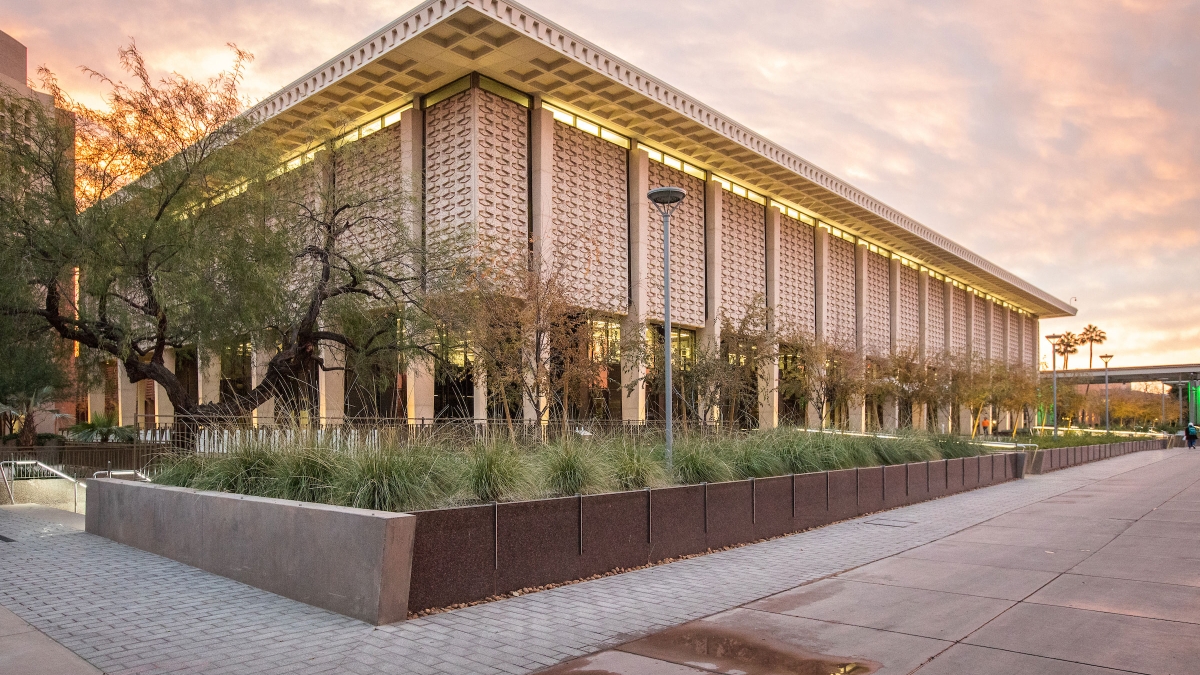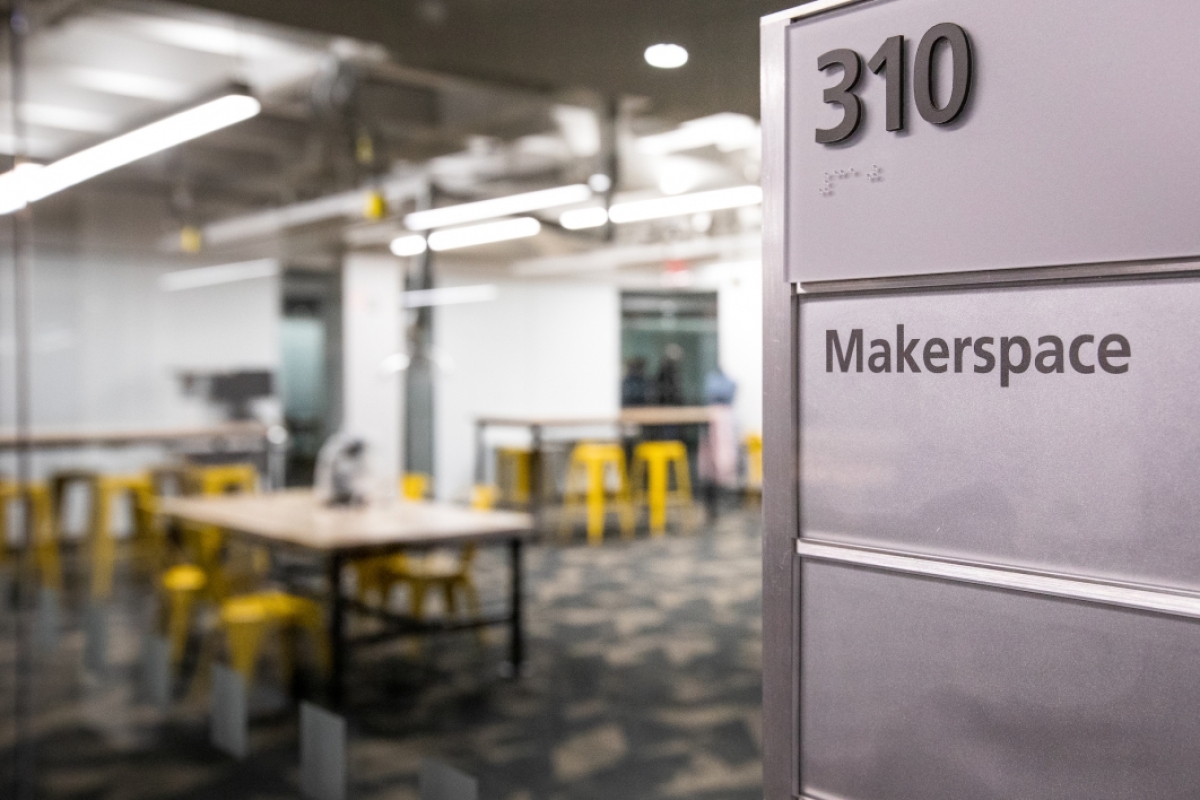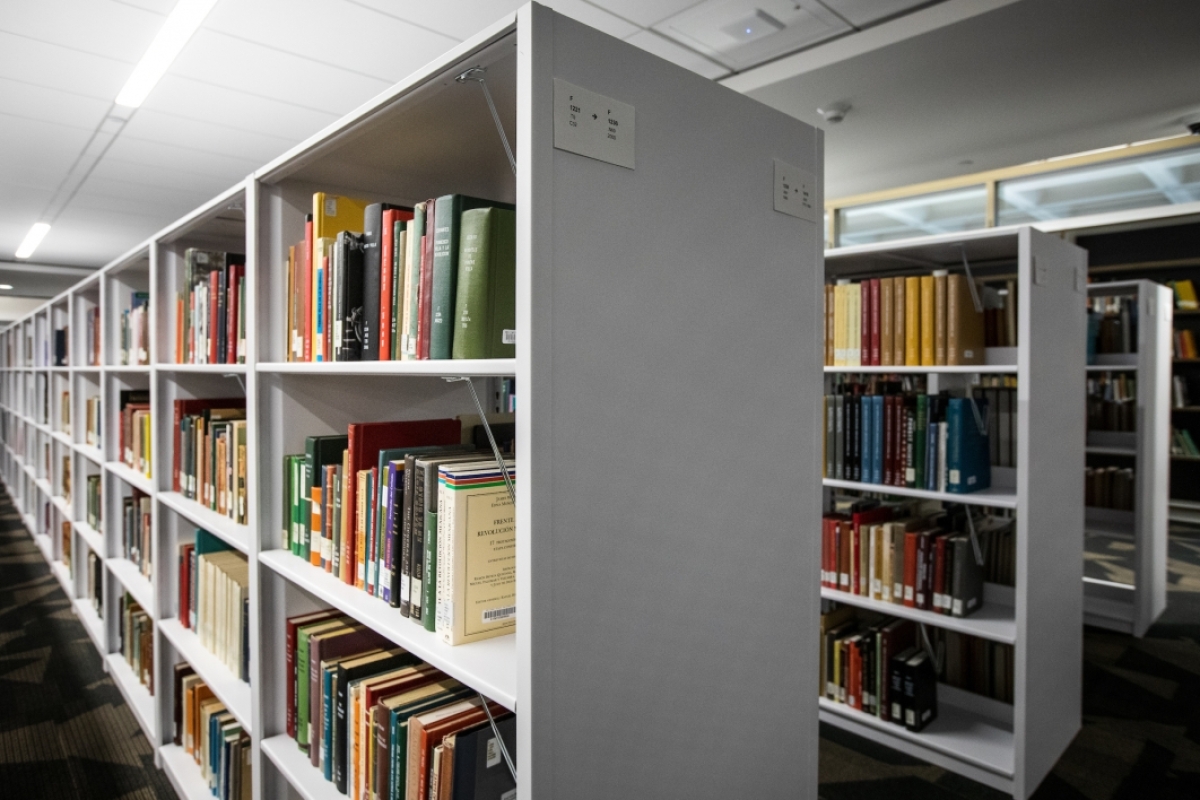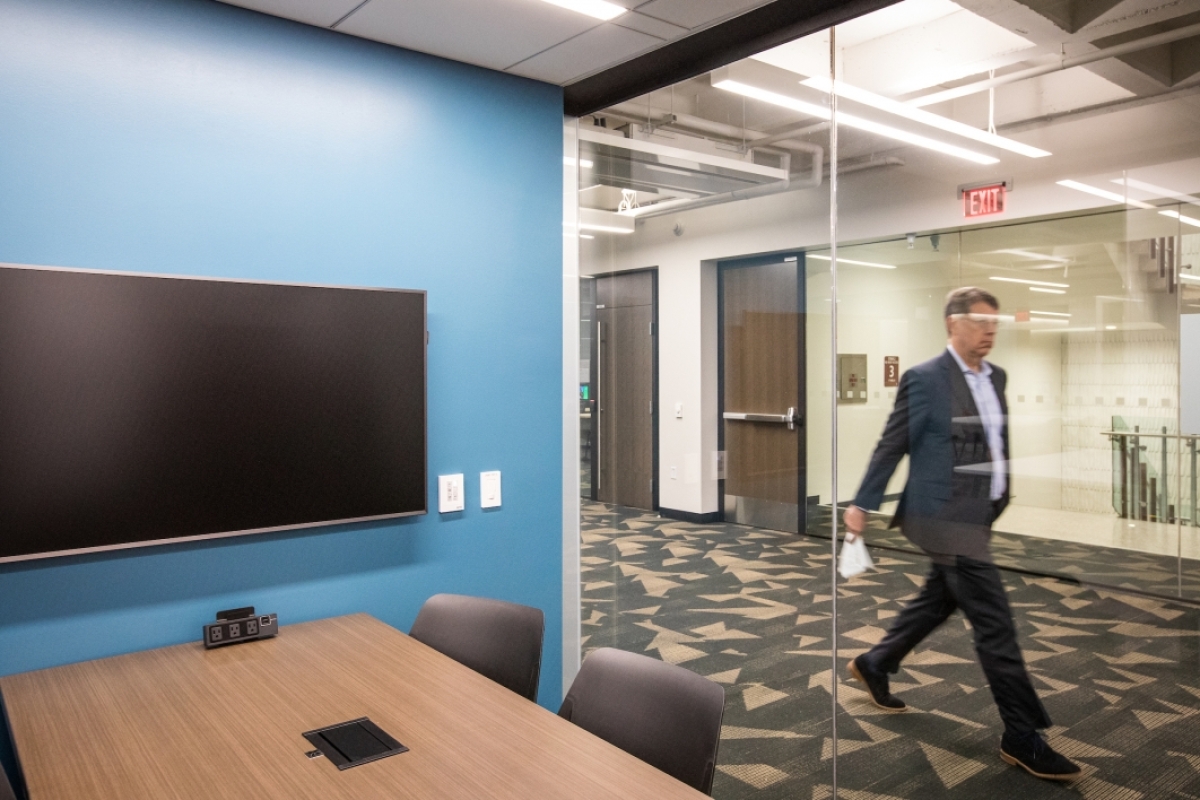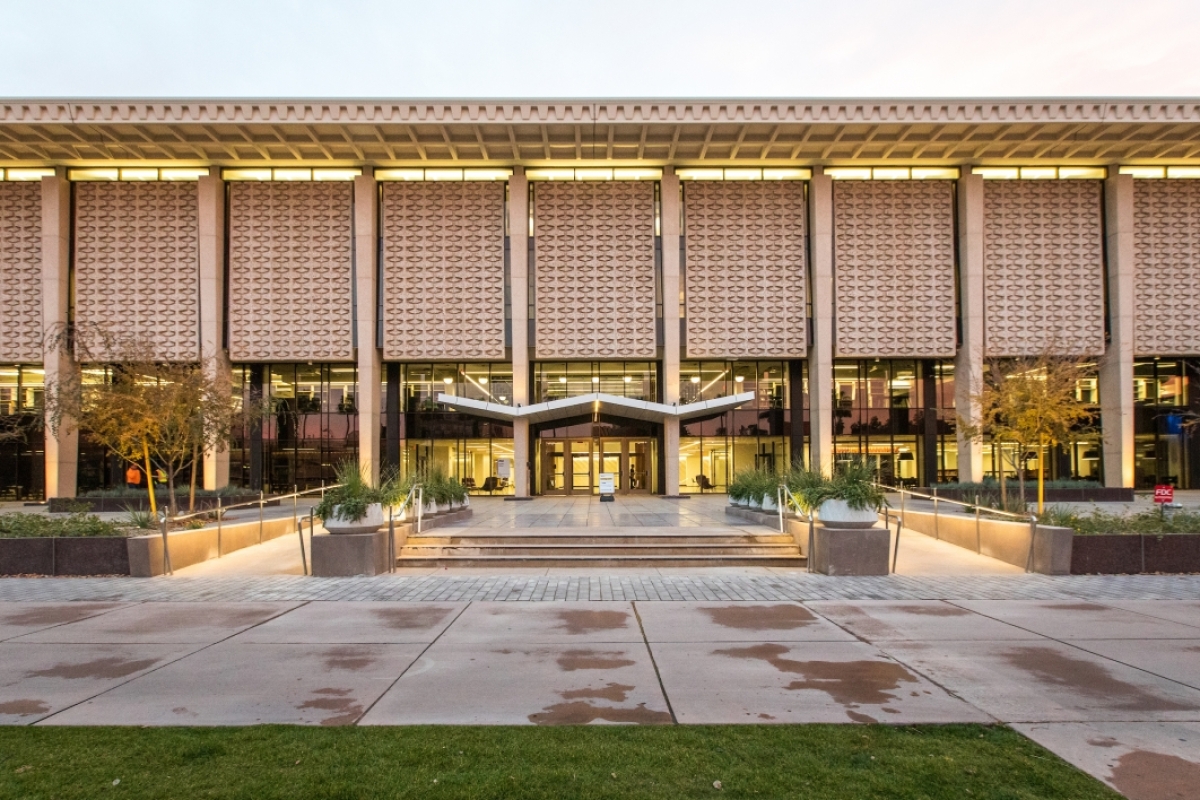Editor’s note: This story is being highlighted in ASU Now’s year in review. Read more top stories from 2020.
On Arizona State University’s most populous campus, a welcome gift has arrived for Sun Devils on the first day of the spring semester — a sleek, new, state-of-the-art library.
Capping off a $90 million renovation, ASU’s Hayden Library, originally built in 1966, has been reinvented and reopened for the 21st century, with an eye toward maximum accessibility, engagement and support for the university’s growing student population.
Hayden Library’s revamped five-story tower, which sits at the center of ASU’s Tempe campus, now features nearly double the student space, enhanced study areas, community-driven book collections, two reading rooms, a variety of research services and interdisciplinary learning labs, and an entire floor devoted to innovation.
Spectacular campus views and abundant natural light, courtesy of floor-to-ceiling windows and the Arizona sun, come as a bonus, says University Librarian Jim O’Donnell.
“Hayden Library has been the engine of intellectual discovery for generations of Sun Devils,” said O’Donnell, who is a professor in ASU’s School of Historical, Philosophical and Religious Studies. “We just turbocharged it for a new generation.”
While many of Hayden’s iconic midcentury design elements remain, there are some wonderful additions too, including a gold staircase — a nod to Sun Devil spirit — and a welcome mural honoring indigenous cultures, directed by Wanda Dalla Costa, an architect and professor in the Herberger Institute for Design and the Arts.
There are hallways that literally sparkle.
“Everything about Hayden is meant to make students feel at home and comfortable and supported — so it can be the place where they can reach higher, go farther and surprise themselves with the success they’re capable of,” said O’Donnell.
Following the 22-month construction and closure of Hayden tower, perhaps the most obvious indication of the library’s reinvention can be seen in its wide and welcoming plaza and above-ground entryways — a striking departure from the underground entrance that has been used solely since 1989.
Upon entering, visitors are greeted by two large and stately reading rooms, designed to draw attention and provide greater access to the ASU Library’s Distinctive Collections, encompassing millions of primary source materials, rare and unique objects spanning centuries.
Community-selected materials focused on the peoples and places of the Southwest will be more visible than before, showcased in library spaces such as the Luhrs Arizona Reading Room, the Labriola National American Indian Data Center and the Community-Driven Archives.
Although the dust may still be settling in Hayden Library, one thing is clear: The books are back.
It took approximately 20 days, 30 truckloads and 9,000 new shelves to bring the books back to Hayden — along with four years of careful planning for how those books would be displayed, curated and delivered, and how they would best serve the university community.
Now, over 30 different collections are on the shelves and ready for exploration.
"Our team employed a community-centered and data-informed approach to designing the collections for Hayden Library," said Lorrie McAllister, associate university librarian for collections services and strategy, who leads the ASU Library’s Future of Print initiative.
With support from the Andrew W. Mellon Foundation, this three-year initiative to reinvent the future of print for ASU explores the interests, needs and expectations of 21st-century academic library users.
"We are grateful for the chance to experiment and activate our open stacks as opportunities for engagement and inquiry," McAllister said.
In 2017, McAllister co-authored a widely shared white paper on emerging design practices that is now shaping the curation and delivery of academic library print collections at ASU at a time when campus space and digital resources are in high demand.
As a result of this work, ASU students, faculty and staff will encounter a series of newly featured collections on nearly every floor of Hayden Library — collections such as "Untold Histories" and "The Southwest Before the U.S."
These collections and others like them have been selected and curated in collaboration with ASU students and faculty. Each collection is university-inspired and strategic in design, driven by data and reader interest.
"A great example of how the 'Future of Print' project has influenced the Hayden collections design is our new Sun Devil Reads collection, designed with students and in-person browsing in mind, organized by themes and with lots of eye-catching cover art," McAllister added.
While many books have returned to Hayden Library and are being showcased in new and inviting ways, those books that have not returned to Hayden will be housed at Noble Library or in the ASU Library’s high-density collection at the Polytechnic campus, where they will be available for fast-turnaround delivery.
Last semester, the ASU Library began offering book delivery and self-service lockers for the quick and convenient pickup and return of library materials.
‘A bold step forward’
More than 75 miles of data cabling and close to 50,000 square feet of space have been added to Hayden Library to more effectively support the needs of its nearly 2 million visitors each year, easily making it the busiest library on any ASU campus.
Tomalee Doan, associate university librarian for engagement and learning services, says that Hayden Library is not only equipped to meet the demands of its bustling campus, it is better positioned to advance the vision of an academic library well into the 21st century.
“This renovation represents a bold step forward in executing a transformative vision of the academic library, both in maintaining the integrity of what a library historically has provided and building a bridge to meet future demands our students and scholars expect today,” Doan said.
That future vision can be glimpsed on Hayden Library’s third floor — a place where people, ideas and technologies all come together for hands-on learning and collaboration.
Here, the No. 1 goal is innovation.
Home to the Unit for Data Science and Analytics, the Makerspace, the Map and Geospatial Hub, and the Center for Digital Antiquity’s Digital Archaeological Record (tDAR), this neighborhood of Hayden takes the ASU community beyond book collections, journals and archival materials into other regions of today's scholarly landscape, in which new platforms for research and data enable knowledge creation in altogether new ways.
“This is the place to learn new interdisciplinary skills, meet people and get involved through experiential learning,” Doan said. “Students and scholars might want to incubate a research idea, think through a problem, or get connected with an expert.”
ASU students are invited to participate in weekly open lab sessions and have free access to 3D printing and a robust technology lending program that is forthcoming, courtesy of the Makerspace.
Additionally, Sun Devils now have access to several high-quality audio/visual production studios, a total of 11 university classrooms, five instruction rooms and 27 conference rooms, where they can conduct group work, study sessions and presentations.
Throughout the library are a variety of amenities, including 10 gender-inclusive restrooms (two on every floor), two wellness and lactation rooms, an interfaith reflection room, an ablution room, three banks of lockers for students to secure their belongings, and a new cafe and market.
Smart design
While the LEED certification is still under review, the sustainability practices that informed the Hayden2020 reinvention design are surely to be celebrated.
Some of those sustainability achievements include the use of recycled materials — approximately 80% of materials used in the renovation were diverted from a landfill.
Approximately 13% of the building’s annual energy expenses are met by Hayden Library’s highly reflective rooftop photovoltaic solar power system, helping to lower the impact of the urban heat island effect.
Overall, the renovation has reduced the library’s annual energy costs by 47%.
Low-flow fixtures, installed throughout Hayden, serve to reduce demand for potable water by 37%, and appropriate plant selection, coupled with high-efficiency irrigation systems, reduce irrigation’s demand for potable water by 80%.
“We’ve greatly benefited from smart, sustainable design practices that have come a long way since the 1960s, when Hayden Library was built,” O’Donnell said. “I’m looking forward to seeing how the library will continue to evolve.”
A grand opening celebration with ASU partners, the architecture firm Ayers Saint Gross and Holder Construction, is slated for March 25.
Top photo by Charlie Leight/ASU Now
More Sun Devil community

ASU president connects with veterans during town hall
Arizona State University President Michael Crow shared his family’s military background, provided university updates and reaffirmed ASU’s commitment to military-affiliated students during a town hall…

Tested tips for taking exams
With May quickly approaching, many students are starting to prep for their most important tests of the year — final exams.Toni Miceli, the inaugural director of the bar exam success program at…

School of Transborder Studies celebrates 15th anniversary
During the summer before his freshman year at Arizona State University, Salvador Macias participated in the AGUILA Youth Leadership Institute, a college access organization designed to help young…


